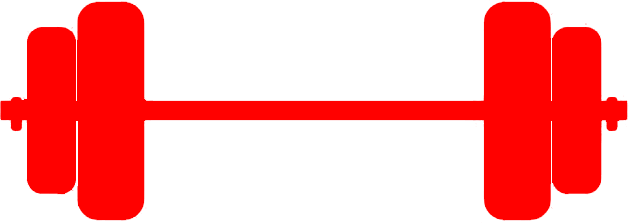What You Need To Know About Having An Ectomorph Body Type

People come in all shapes and sizes, and understanding your body type can help you find the best fitness and nutrition programs to reach your goals. There are three common somatotypes (or body types), including ectomorph, mesomorph, and endomorph. If you’re naturally lean and have difficulty gaining weight, you may have an ectomorph body type.
Ectomorphs are known for their slender frames, long limbs, and typically have low body fat. While these traits might make it hard to pack on muscle or weight, they also come with distinct advantages like agility and endurance.
This guide will explore the defining characteristics of the ectomorph body type, along with practical tips for building muscle, maintaining energy levels, and thriving in your fitness journey. For a tailored workout plan for your body type, sign up for ATU Mobile today and choose the rectangle or extended square body type.

The Three Main Body Types
The concept of somatotypes was introduced by Dr. William Sheldon in the 1940s. He categorized people into three primary body types:
- Ectomorph: Slim and lean with difficulty gaining muscle or fat.
- Mesomorph: Naturally muscular and athletic.
- Endomorph: Rounded physique with a tendency to store fat easily.
Common Characteristics of an Ectomorph Body Type
- Slim, lean build with little body fat
- Narrow shoulders, chest, and hips
- Long limbs and smaller bone structure
- Fast metabolism
- Difficulty storing fat or packing on muscle
If you identify with these traits, you likely fall into the ectomorph category. However, most people have a mix of body type characteristics, so it’s possible to display traits from other somatotypes as well.
Benefits of Understanding Your Ectomorph Body Type
While gaining muscle or weight may be more challenging for ectomorphs, there are a number of advantages that come along with this somatotype.
- Fast Metabolism: Ectomorphs often enjoy a slightly higher calorie intake without gaining excess fat.
- Agility and Endurance: The lean build of ectomorphs lends itself well to endurance sports and activities that require speed or flexibility.
- Efficient Fat Burning: Ectomorphs typically store less body fat, which makes them less prone to obesity-related issues.
Best Workouts for the Ectomorph Body Type
Ectomorphs benefit from strength training and lower amounts of cardio in order to focus on muscle growth. Here’s an example of how you could structure your workouts if this is your body type:
1. Strength Training
Building muscle should be the primary focus for ectomorphs. Incorporate compound movements to maximize muscle growth.
- Frequency: 4-5 days per week
- Exercises: Squats, deadlifts, bench press, shoulder press, and rows
- Reps and Sets: 6-10 reps for 3-5 sets, focusing on progressive overload
2. Cardio Workouts
Cardio is important for cardiovascular health, but ectomorphs might want to avoid making it a main focus of their workout routine in order to amplify muscle growth.
- Frequency: 1-2 days per week.
- Activities: Light jogging, cycling, or walking.
- Duration: 15-20 minutes per session.
3. Recovery and Flexibility Training
Ectomorphs should incorporate rest days and flexibility exercises to enhance mobility and prevent injuries.
- Frequency: 1-2 days per week.
- Activities: Yoga, stretching, or foam rolling.
Diet Tips for the Ectomorph Body Type
The best diet for you ultimately depends on your overall goals. But for ectomorphs, they might want to focus on a diet that helps them gain muscle and maintain energy levels. If you are an ectomorph, here are some strategies you might want to follow.
1. Calorie-Dense Foods
Ectomorphs may need to consume more calories than other body types in order to support muscle growth. Here are some nutrient-dense, high-calorie foods that can be great for your diet:
- Nuts and seeds
- Avocados
- Whole grains
- Nut butters
2. Macronutrient Breakdown
Balance macronutrients to fuel your body effectively. For example:
- Protein: 25-30% of daily calories (chicken, fish, tofu, eggs)
- Carbohydrates: 50-55% of daily calories (rice, oats, quinoa)
- Healthy Fats: 20-25% of daily calories (olive oil, nuts, fatty fish)
3. Frequent Meals
Eating small, frequent meals every 2-3 hours ensures a steady supply of energy and nutrients for muscle growth. Consuming protein after strength workouts also plays a big role in aiding muscle growth and recovery.
4. Hydration
Staying hydrated is essential for overall health and optimal performance. Aim for 8-12 glasses of water daily.







